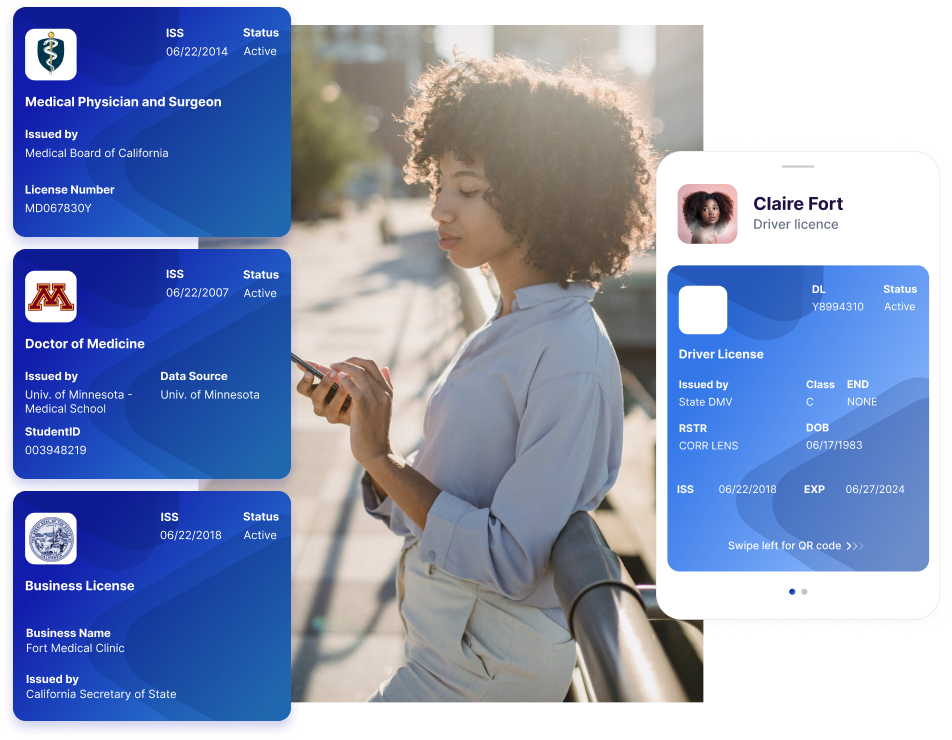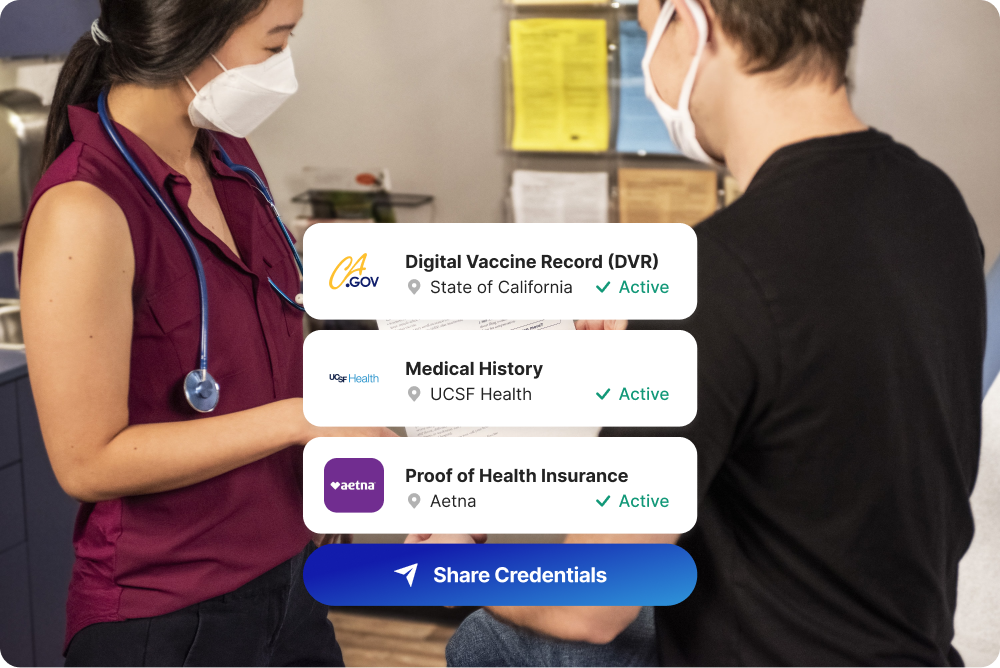Key Takeaways
Digital identity is shifting toward a more secure and user-controlled model, one where portable credentials in digital wallets could replace many paper and account-based systems. Wallets designed to hold verifiable records like mobile driver’s licenses or diplomas have the potential to reduce fraud, streamline governance, and put individuals back in control of their data.
The Shift to Digital Wallets
The next phase of digital identity is centered on wallets that store verifiable digital credentials (VDCs). Instead of showing a plastic ID or faxing paperwork, individuals will present cryptographically signed credentials that can be instantly verified. Mobile driver’s licenses are emerging as the first widespread form of adoption, but the same technology will expand to education, healthcare, finance, and more.
By adopting privacy-preserving identity verification and interoperable VDCs, organizations can streamline how users prove who they are. This new infrastructure allows people to securely prove attributes such as residency, professional qualifications, or business ownership without exposing unnecessary details.
A Real-World Example
To illustrate, consider Claire, a 39-year-old physician in California who runs her own practice. Claire’s daily life demonstrates how digital identity supports both personal and professional use cases.
- Proof of Identity: Claire’s mobile driver’s license, issued by the DMV, is not just proof that she can drive. It also allows her to open a bank account or apply for a business license.
- Proof of Residency: The same mobile ID confirms her California residency when she applies for state benefits.
- Proof of Education: Claire’s universities issue digital diplomas that she can share with patients or lenders when applying for credit.
- Proof of Medical License: Claire needs to verify her active medical licenses to practice in multiple states and prescribe medication via telemedicine.
- Proof of Business License: To apply for a small business loan, she can present her verified business license to a regional bank.
Each of these transactions demonstrates the efficiency compared to today’s slow, paper-heavy processes.

Verifying Patients in Healthcare
Digital identity also reshapes how Claire interacts with her patients. Today, confirming insurance coverage or obtaining medical history involves paperwork, manual calls, or outdated fax systems. With interoperable verifiable digital credentials, these steps become instant:
- Proof of Insurance: Patients share standardized digital insurance credentials, no matter their provider.
- Proof of Medical History: Health records become portable, reducing the burden on patients to request transfers from prior providers.
- Proof of Immunizations: Vaccination records can be instantly verified, even if a patient has lived in multiple states.
These capabilities reduce administrative costs, enhance trust, and give patients more control over their health information.

Why It Matters Now
Attempts to build digital identity architecture in the late 1990s faced limited adoption, but the environment today is far more favorable. Smartphones, advancements in cryptography, and global standards bodies have created the foundation for secure, interoperable systems. Mobile driver’s licenses, outlined in ISO/IEC 18013-5, are setting a precedent for future verifiable digital credentials.
The broader vision is a system where credentials interoperate seamlessly. With support from identity federation and authentication standards, people like Claire can present only the information needed in each context, for example, proving she is over 21 without showing her full birthdate.
Unlocking Economic and Social Value
The future state of digital identity is not only about convenience. It reduces the risk of fraud, streamlines compliance, and supports innovation. Businesses will rely less on fraud mitigation and reduce costs associated with compliance failures. Governments will see fewer fraudulent claims for benefits. Individuals will gain more privacy and control in every interaction.
As adoption accelerates, digital identity will underpin the secure, efficient, and privacy-preserving infrastructure required for modern economies. The issuance of mobile driver’s licenses is only the first step. The end goal is a universal ecosystem of verifiable digital credentials that are secure, portable, and trusted across borders and industries.

